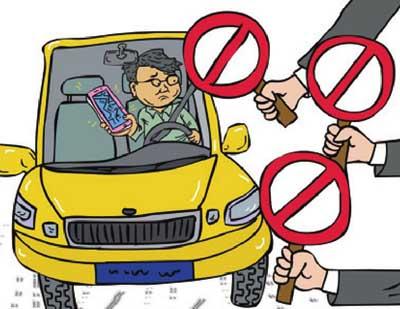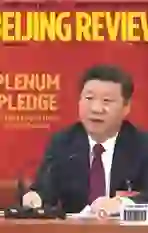Will Tough Regulations Help the Online Car-Hailing Business?
2016-05-14

In early October, transport authori-ties in Beijing, Shanghai, Guangzhou and Shenzhen—four mega-cities—separately issued draft local regulations on qualifications for drivers who provide ridesharing services. The new rules feature restrictions on drivers place of residence, car registration locale, vehicle model and age, and insurance. In Beijing, for example, only residents who have a locally registered car with an engine of 1.8 liters or more and a wheelbase of at least 2.66 meters can apply to operate as a car-hailing driver.
The ride-hailing business in China has rapidly developed in recent years. While providing city dwellers with more transport options, it has also caused problems, particularly regarding passenger safety, and this consequence is widely seen as the major reason for the tough new measures.
The new regulations, however, have sparked heated debates. Some argue that banning non-local drivers will inevitably strip a large number of drivers of the opportunity to pick up passengers, and this will adversely affect not only them but also city dwellers who depend heavily on online car-hailing services. Stipulating certain requirements for cars will inevitably push up service prices and thereby probably lead to the re-emergence of unlicensed cars on the streets, which are much less safe.
Striking a balance
Du Feng (Communications Information News): Since their birth, online car-hailing services have been seen as exemplifying the sharing economy. In late July, news about the sectors legalization filled the various online ride-hailing platforms with joy. But now, the newly released, tough regulations seem to be dimming its prospects.
The new regulations will help the authorities exercise stronger supervision. But if imposing restrictions on online car-hailing services is the only means by which the government has to cope with the various problems, this will induce dire consequences. Many online car-hailing drivers will lose their jobs, and unlicensed cars may reappear to fill the gap. Urban dwellers need diverse transport options. So, a balance must be struck between satisfying the various interests and maintaining order.
As for online car-hailing services and the taxi sector, suggestions have been put forward to divide the two and use tailored management practices accordingly, instead of imposing the taxi management model on online car-hailing services.
In the United States, at least 23 states differentiate between traditional taxis and online car-hailing services when it comes to management measures. Britain does not ban private cars from getting involved in online ride-sharing services, but a strict distinction exists between them and traditional taxis. Londons transport authority focuses its supervision on online car-hailing platforms and conducts inspections from time to time.
Ride-sharing services are still in an initial development stage, and thus some problems are inevitable. What the government needs to do is not to ban this or that, but to balance as well as possible the interests of different parties.
Liu Yijie (www.sconline.com.cn): Complaints have been voiced online that the new regulations may lead to a decrease in the number of drivers offering ride-sharing services. As a result, the old demons characterized by refusals to pick up passengers and exorbitant price demands may resurge.
In putting together the new measures, the authorities have obviously neglected two very significant points. First, the market should play a decisive role in allocating resources. The collaborative consumption advantages gained and the disappearance of unlicensed taxis should be both attributed to the rise of car-hailing services. Second, the fate of the ride-hailing sector lies in the hands of the market. Requirements for drivers, types of car and the like should be decided by consumers. Compared with unlicensed taxies, online car-hailing services are much safer and more convenient.
By issuing tough regulations, superficially for the good of the public, the government is actually competing for market share with ridesharing platforms. In 2014, Chinas traditional taxi industry generated revenue of 180.8 billion yuan ($26.7 billion). By contrast, online carsharing transactions are expected to reach 55.9 billion yuan ($8.2 billion) in value in 2016. Faced with the pressure of competition brought by online car-hailing platforms, the traditional taxi sector has failed so far to compete in a fair way, and its future seems uncertain, at least for the time being.
Wang Dan (Shenzhen Special Zone Daily): Its reasonable to expect ride-sharing drivers to meet certain requirements in accordance with transport safety regulations, and its also acceptable to require such drivers to pass certain tests.
Its probably unnecessary, however, to have all car-hailing drivers take exams, as the organization of tests on such a large scale would impose heavy resource costs. In fact, the car-hailing platforms have already verified the drivers who use their apps. The authorities, therefore, can examine the information about drivers the car-hailing platforms have already obtained. New recruits can be required to take tests, while those who have already passed the platforms assessments can be exempted, so as to save resources.
Wang Xinyi (www.cnhubei.com): The advantages of online car-hailing services over traditional taxis are obvious. Passengers pay less by turning to car-sharing rather than taking a standard taxi. Meanwhile, the online ride-hailing sector is helping to allevi- ate the heavy pressure on transportation in large cities.
Amid the boom in online car-hailing services, however, safety issues have emerged. There have been reports about drivers murdering or assaulting passengers. Furthermore, some drivers use very old cars, making journeys uncomfortable and unsafe; some have just obtained their driving license and lack experience, which makes the service dangerous; and some contravene traffic regulations by picking up or dropping off passengers in places where stopping is not allowed. These are just some of the problems that have cropped up with the online car-hailing business.
As ride-sharing drivers using vehicles that do not meet the newly issued requirements will have to pull out of the game, the consequent increase in demand for traditional taxi services may strain urban transportation capacities once again. Besides, higher standards for online car-hailing services will raise their costs and in turn push up the price of taking rides.
Steering this sector toward higher safety standards is important, but fully respecting the publics need for car services is equally important. At the current stage, the government should not set too high a threshold for cars used to provide ride-sharing services, but instead gradually raise the requirements over a period of three to five years. Concurrently, of course, improvements to public transport should continue unabated.
Time to act
Zhen Yuan (Peoples Daily): China has long held a tolerant attitude toward emerging economic sectors like online car-hailing services, particularly when the direction the new industries are heading toward remains unclear. Several yearsexperience shows that online car-hailing services bring tangible benefits to the public while at the same time effectively utilizing idle resources.
Online car-hailing services, however, have entered the realm of public transport. Based on the concept of the sharing economy, the integration of internet technology with taxi services has caused problems in addition to bringing benefits. When negative side effects crop up and even expand, government intervention seems inevitable.
A surge in the number of car-hailing drivers has led to a rise in serious accidents, and peoples concerns about personal safety are beginning to outweigh their desire for the convenience the services bring. Meanwhile, as terrible traffic congestion plagues almost all of Chinas mega-cities, some people blame the development of car-hailing services for the worsening situation. And besides, the monopoly in the car-hailing industry is becoming increasingly daunting. Obviously, its no longer an issue of whether the government should take measures to regulate and rein in the sector, but how it should do so.
Naturally, not everyone will be happy with the new regulations, particularly when they are initially implemented. In shaping the new measures, the authorities need to take into consideration many things such as the interests of different parties and public transport capacity. Once the various sides have contributed their opinions, we might see a breakthrough on the issue.
